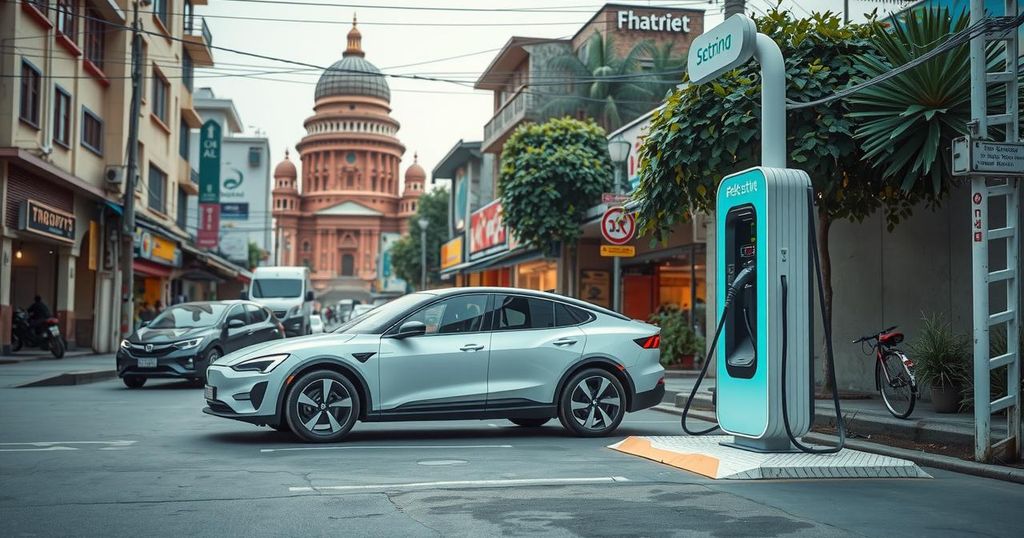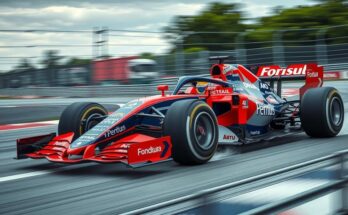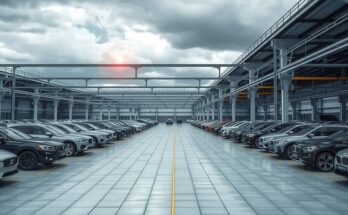Tesla is reportedly preparing to enter the Indian market, hiring in major cities and seeking showroom locations. Despite an extremely competitive EV landscape dominated by Tata Motors, Tesla’s higher price point poses a challenge in the price-sensitive market. India’s government offers incentives to boost EV sales, but current infrastructure and market size may limit Tesla’s initial success. Overcoming various logistical and governmental obstacles will be critical for Tesla’s potential growth in India.
Tesla may soon penetrate the Indian market after years of speculation. The electric vehicle (EV) giant has initiated recruitment for various positions in Delhi and Mumbai, alongside searching for suitable locations for showrooms. This entry into Asia’s third-largest economy presents a compelling growth opportunity as global EV sales decline and competition from Chinese manufacturers intensifies.
However, the key question remains: can Tesla thrive in a market that prioritizes cost? Currently, Tata Motors leads India’s EV market with over 60% share, followed by MG Motors at 22% and Mahindra and Mahindra. The base model of Tesla vehicles is priced around $40,000, well above the cost of competitors’ vehicles, which are often less than half that price.
This substantial price difference positions Tesla as a luxury brand and limits its potential customer base in a price-sensitive region. Moreover, adapting Tesla’s cars to India’s road conditions is another formidable challenge, as the low ground clearance of Tesla models may necessitate costly engineering modifications.
EV sales account for less than 3% of all passenger vehicle sales in India, which underscores the small yet growing size of the market. Additionally, supporting infrastructure, such as charging stations, remains an issue, with only approximately 25,000 currently available nationwide. Thus, Tesla’s competitive entrance into this niche market may be precarious.
Despite the challenges, policymakers in India are keen to attract Tesla. The country has ambitious plans to increase the adoption of electric vehicles, with a targeted goal of having various categories of vehicles go electric by 2030. Provincial governments are actively incentivizing this transformation through specific EV policies.
India offers significant subsidies on electric cars, reaching up to 46% for the most popular models, incentivizing consumers to switch from conventional vehicles. Recent tax reductions on imports for foreign manufacturers that produce locally are also designed to encourage international players like Tesla to establish a presence in the Indian market.
Nevertheless, the proposed incentives require foreign manufacturers to invest in local production, which may disadvantage domestic companies. A 15% import duty for EVs, significantly lower than that of gasoline cars in India, illustrates the government’s intent to foster a localized manufacturing environment, although it raises equity concerns among local automakers.
Contrary to apprehensions, domestic manufacturers like Mahindra and Mahindra express confidence in competing with Tesla, viewing its entry as beneficial for strengthening the ecosystem. Advances in battery technology have mitigated “range anxiety” concerns, as domestic players continue to innovate rapidly.
On the other hand, Tesla’s sophisticated technology, user interface, and battery performance set high expectations, potentially appealing to an increasing demographic of affluent Indian consumers who may view ownership of a Tesla as a status symbol. Despite the attractiveness of this segment, Tesla has not yet confirmed any commitments to manufacturing within the country, instead relying on imports for initial sales.
The company’s future production decisions will depend on various factors, including the expansion of India’s affluent consumer base and favorable trade negotiations with the United States. President Donald Trump has expressed concerns about Tesla establishing manufacturing operations in India, fearing this could be detrimental to American interests. Thus, it appears that, in the immediate term, consumers may witness the launch of upscale Tesla showrooms rather than factories aimed at generating employment for the workforce.
In summary, while Tesla’s entry into the Indian market presents opportunities, significant barriers remain. Price sensitivity, local competition, road conditions, and infrastructure challenges are critical obstacles for the American EV manufacturer. Moreover, the evolving policy landscape and the need to localize production emerge as pivotal factors influencing Tesla’s market strategy. The road ahead for Tesla in India will depend largely on its ability to adapt to these market realities. The ongoing commitment by India towards electric vehicle adoption may provide a conducive environment for Tesla’s growth. However, without targeted investments in localized manufacturing and market-specific models, Tesla may struggle to capture a significant share of this burgeoning segment.
Original Source: www.bbc.com




